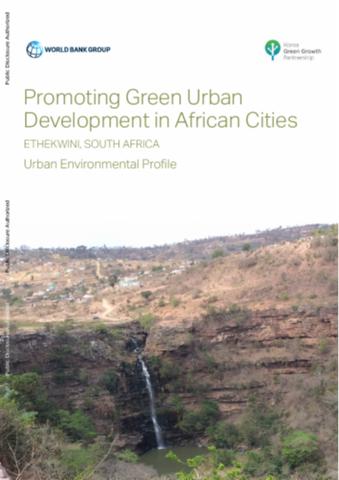Resource information
The city of eThekwini or Durban has undergone a period of rapid urbanization that has contributed to the degradation of the city’s natural environment. Climate change is placing further strains on the city’s ability to manage the urban environment. The urban environmental profile of eThekwini has been prepared as the first component of the assignment promoting green urban development in Africa: enhancing the relationship between urbanization, environmental assets and ecosystem services, a project being conducted under the leadership of the World Bank. An overall objective of this project is to link the study of urban environmental issues with the advancement of more sustainable urban growth. The profile summarizes the existing quality of the terrestrial and other aquatic environmental assets, identifies the key drivers that are the cause of their vulnerability, and describes the key institutional challenges and constraining factors that limit the city’s ability to address environmental management challenges. Identification of the key environmental assets and key drivers of environmental degradation within the city required a more comprehensive review of reports on urban planning and infrastructure services. The urban environmental profile is organized as follows: section one gives introduction. Section two, eThekwini context, sets the background, and context of the study of Durban, providing an overview of the impacts of urbanization and climate change and drawing the link to the urban environment. Section three, quality of the environmental assets of eThekwini describes the state of the key environmental assets of eThekwini: the terrestrial assets, aquatic assets, coastal assets, and the air, and attempts to infer the associated historic and current trends. Section four, drivers of environmental vulnerability and degradation describes the key issues that are driving degradation, the impacts caused, and the reason for these challenges. Section five, institutional issues and challenges describes the key factors that constrain the eThekwini‘s ability to effectively address environmental management challenges. Section six, key findings provides a synthesis of key findings of the study.


